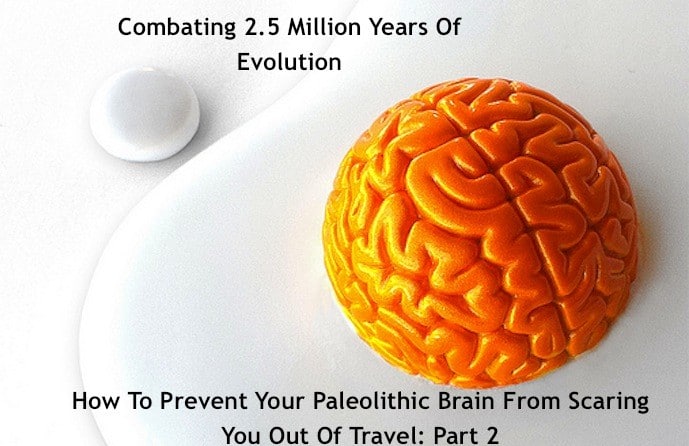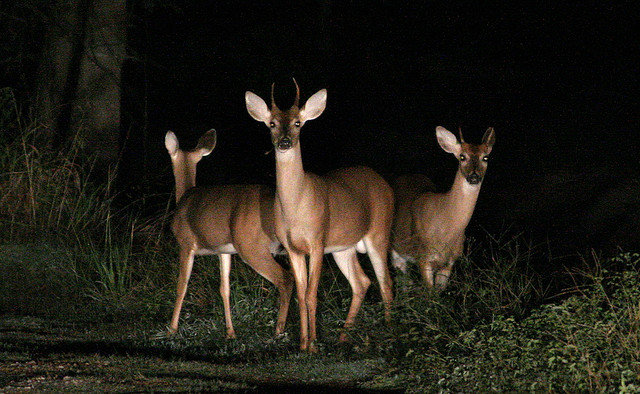In Part 1 of Preventing Your Paleolithic Brain From Scaring You Out Of Travel, you saw that visualizing is believing and that decision making is often a social affair. In this, Part 2 you’ll see how ancient adaptations an also be useful in the modern world – if focused with a dose of logic. Stereotyping, 47 year old women, and confused deer can actually help you realize your travel dreams…once you understand the processes behind them. Then you can find the ultimate mind hack in the end of this series Part 3.

Use The Right Stereotypes
Stereotyping and generalizing come in handy, especially after you see your pal caveman Bob drops dead after eating some red berries. After that, it makes sense to avoid that red berry, and perhaps red fruits all together. Again, it’s your brain playing it safe for your survival and we all stereotype for mental efficiency. Fighting your brain’s natural tendencies is an uphill battle so instead make your stereotypes more accurate and move from there.
This is the safest time in human history to be alive and travel. Nearly 2.2 billion flew last year and nearly a billion people took 1 international trip during that same time. The average traveler is a 47 year old woman. The 4th most visited country in the world is China and Antalya, Turkey is the 4th most visited city. More than 60% of travelers in the US, EU, and Turkey are over 30. Hostels can look like this, or this.
 Most people who travel for leisure will tell you they found the experience to be enjoyable, enlightening, fun…without any regrets. You might not like everywhere you travel but chances are you won’t regret finding that out for yourself.
Most people who travel for leisure will tell you they found the experience to be enjoyable, enlightening, fun…without any regrets. You might not like everywhere you travel but chances are you won’t regret finding that out for yourself.
- Be sure to use your (real, virtual, and otherwise) social networks to get a wide perspective for your ancient brain. Otherwise, on your own you’ll tend to find information that only validates your beliefs. Called confirmation bias, it’s how your brain makes you not feel left out of the crowd.
Combating Active Passiveness And Why People Don’t Flee Burning Planes
Active passiveness, a phenomena similar to “deer in the headlights” syndrome, is like your computer locking up after you open too many programs at once. What keeps deer from jumping out the way of oncoming traffic, also keeps many people firmly planted in their seats after an air disaster and could – on a less extreme level – keep you from taking that trip you’ve always wanted.

Active passiveness occurs while our brains are searching for the “right moment” to proceed forward with a decision. In a survival situation those few seconds of decision can mean the difference between life and death; when it comes to a generous lifetime of contemplating, it can mean never realizing your travel dreams. The right time to travel isn’t a decision between life and death, so the right time is when you make it, overcoming the practical obstacles one by one.
Don’t be the deer in the headlights, you can see how well that ancient tactic works out for them under the lights of a modern automobile. Instead, the best way to avoid active passiveness, whether it’s a plane crash or a decision to travel is preparation in advance. Once you have a plan of action, the active passiveness process doesn’t occur, since your brain has what to do ‘preloaded’, rather than trying to think on the fly when stressed. On a burning plane, it could save your life, for everything else it could help you live.
In Part 3 you’ll find out how you’re always right, the reason statistics can’t prove anything to our ancient brains, and the ultimate Paleolithic brain hack. Old and new, by the end of next week you’ll have those neurons firing up in preparation for your next trip.
[photos by: “lapolab” (egg brain), tamara.craiu (people talking in cafe), T Hall (deer in headlights)]












This is interesting, and the idea of confirmation bias applies to many of the things we do. Somehow we seem to need validation of our actions. When I read the phrase ‘active passiveness’ I immediately thought of that state you’re in in working life when there’s so much to do that you don’t know where to start. Maybe not life or death, but still unproductive.
Our brains don’t like conflict and resolve internal ones by somehow making us right 😉 One of the benefits of being a highly social species is having someone to tell us we’re wrong – before we get eaten by something.
Your analogy for active passiveness is a good one, I conjure up the image of the Mac “beach ball” spinning away in our brains unproductively…
As intrepid of a traveler as I am, on the occasions I come back to the U.S for business or to see family, I find I have to jump-start myself to get back on the road. The U.S. is a comfortable place compared to the developing nations where I usually hang out, and it’s easy to get lulled by the comfort and stuck. But once you’re out there, you find the world is an amazing, wonderful place that’s just as safe as he U.S. (given that we make responsible choices where we travel), full of people who are more like u s than they are different. At the very least, traveling renews my sense of gratitude every single time.
Our minds (even nomadic ones) are always searching for stability, making that jolt a tough one from time to time 🙂 As you say though, once you do it’s rare to have regrets about it.
Totally agree that active passiveness is the biggest roadblock as there is no perfect time.
When it comes to travel we have so much time and data to validate our indecisiveness, it’s easy to get caught actively passive. When you’re in a critical situation, it means living or not – and the experience to take away from it for next time (if you live).
When it comes to modern decisions, we don’t have that “it worked or didn’t” point, leaving many travel-hopefuls in limbo.